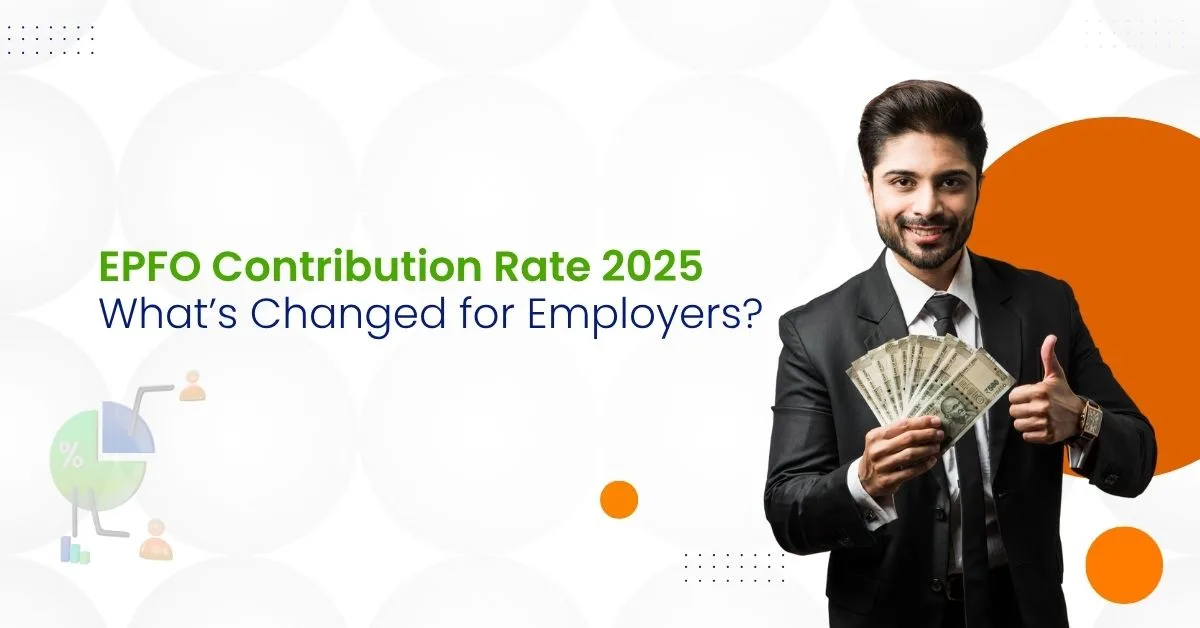The Employees’ Provident Fund Organisation (EPFO) is an important social security agency in India. It helps millions of employees save money for retirement. It also helps keep their financial future safe. Employers must know the EPFO contribution rate. This helps them follow rules and give good benefits to their workers.
In this article, we explain the EPFO contribution rate for 2025. We share recent changes, why following rules is important, and tips for employers. These tips help manage social security payments easily.
Ready to streamline your payroll and ensure EPFO compliance effortlessly? Book a free demo of Bharat Payroll’s AI-enabled HR and Payroll solutions today and experience seamless automation.
What is the EPFO Contribution Rate for 2025?
In 2025, the EPFO contribution rate stays at 12% of an employee’s basic salary plus dearness allowance (DA). Both the employer and employee pay 12% each on these salary parts.
These payments fund three main social security plans:
- Employees Provident Fund (EPF): A retirement savings fund. It grows while the employee works. It builds money for retirement.
- Employees Pension Scheme (EPS): Gives pension money after retirement or if the employee is disabled. It helps provide steady income.
- Employees Deposit Linked Insurance (EDLI): Gives life insurance if the employee dies while working. It supports their family with money.
| Contribution Type | Percentage of Basic Salary + Dearness Allowance |
|---|---|
| Employee Contribution | 12% |
| Employer Contribution | 12% (includes EPS and EDLI) |
Breakdown of EPFO Contributions
Employee Contribution
The employee’s 12% share is taken from their monthly salary. This steady saving helps build their retirement fund. It keeps their financial future safe.
Employer Contribution
The employer’s 12% payment is split like this:
- 8.33% goes to the Employees Pension Scheme (EPS). It pays pension benefits.
- 3.67% goes to the Employees Provident Fund (EPF). It grows the retirement savings.
- Employers also pay extra charges for administration and insurance. These help EPFO services run well.
This split makes sure employees get both a lump sum and a steady pension.
Looking to simplify complex employer contributions and stay compliant? Let Bharat Payroll’s advanced automation handle your payroll with precision. Get started with a free demo.
What’s New in 2025?
2025 brings important changes to make EPFO more open and easy to use:
1. No More Wage Ceiling or Headcount Limits
Before, EPFO payments had limits on salary and company size. Now, these limits are gone. This means:
- All formal workers can join, no matter their salary.
- Self-employed people can join EPFO plans too.
This change grows social security for India’s workers.
2. Updated Pension Scheme Allocation
The EPS part of the employer’s payment is changed to make pensions last longer. This helps employees get a minimum pension that meets their needs after retirement.
3. Digital Tools for Easy Access
EPFO is using technology to make account management simple:
- The Universal Account Number (UAN) portal lets employees and employers track payments, see account statements, and manage EPF accounts online safely.
- The UMANG app lets users access EPFO services on mobile. It offers reminders and claim tracking.
- EPF advances and withdrawals go straight to UAN-linked bank accounts. This cuts delays and fraud.
These tools make EPFO services quick and clear.
Why Should Employers Update Payroll Systems?
Keeping payroll systems up to date with EPFO rules is key. Here is why:
- Accurate Deductions: It makes sure employee and employer payments are right. It stops mistakes with gross wages or salary accounts.
- Legal Compliance: It helps avoid fines under the Employees Provident Funds Act and Miscellaneous Provisions.
- Employee Trust: Timely, clear payments boost morale. It shows care for employee welfare.
- Smooth Audits: Updated records help inspections by EPFO regional and field offices.
Employers should work with payroll providers to make these changes before the new financial year.
How Can Employers Use Digital Tools for EPFO Compliance?
Digital platforms make following rules easier:
UAN Portal
- Manage employee EPF accounts well.
- Track PF balances and past payments.
- File monthly returns using the new Electronic Challan cum Return (ECR) system.
UMANG App
- Use EPF services anytime, anywhere.
- Send reminders about unpaid contributions.
- Check claim and complaint statuses fast.
Revamped Electronic Challan cum Return (ECR)
- Makes online EPF payment filing simple.
- Automates matching of payments.
- Improves employer experience with smooth steps.
UAN Click Feature
- Makes handling Universal Account Numbers easy.
- Gives safe employee access to EPF accounts.
Simplify these tasks with Bharat Payroll’s integrated platform—automate filings, track contributions, and manage employee accounts effortlessly. Get your free demo today.
Benefits of EPFO Compliance for Employers
Following EPFO rules gives many benefits:
- Builds Employee Trust: Makes sure employees get their EPF benefits on time.
- Protects the Organization: Avoids fines and legal problems.
- Boosts Employer Brand: Shows care for employee welfare. Helps attract and keep workers.
- Supports National Goals: Matches the Ministry of Labour Employment’s push for wide social security.
Practical Tips for Employers
- Verify Employee Info: Check member IDs and salary account details in the UAN portal.
- Educate Employees: Share info on EPF benefits, minimum pension rights, and digital tools like EPFO’s ABCD Pathshala.
- Monitor Contributions: Regularly check payments are credited right.
- Use Automated Reminders: Use digital tools for on-time payment alerts.
- Stay Vigilant: Keep zero tolerance for fraud or bribery. Work with the Chief Vigilance Officer and Central Vigilance Commission to keep rules strong.
Real-Life Example
A mid-sized IT firm updated its payroll with the new EPFO rates and used the UMANG app for employees. The results were:
- Faster PF claim and withdrawal processing.
- Happier employees with clear access to account statements.
- Less HR work thanks to smooth service delivery.
Summary
The 2025 EPFO contribution updates focus on more coverage and digital tools. Employers must update payroll systems, use the UAN portal and UMANG app, and talk clearly with employees.
Being proactive helps protect employees’ financial futures. It also avoids compliance problems and supports a fair provident fund system in India. Make EPFO compliance part of your company culture. Stay ahead of the curve.
Ready to revolutionize your payroll and HR management?
Explore Bharat Payroll’s AI-enabled solutions designed for effortless EPFO compliance and employee satisfaction.
Frequently Asked Questions (FAQs)
1. What is the EPFO contribution rate in 2025?
It is 12% of the basic salary plus DA, shared equally by employer and employee. This rate ensures a steady accumulation of savings for employees, helping them build a secure financial future for retirement. Both parties contribute equally to maintain the balance and sustainability of the fund.
2. Are there changes to wage ceilings for EPF contributions?
Yes, wage ceilings and employee count limits are removed. All formal workers and self-employed can enroll. This change promotes inclusivity by extending social security benefits to a wider workforce, including those previously excluded due to salary caps or company size.
3. How is the employer’s contribution divided?
8.33% goes to the Employees Pension Scheme, 3.67% to the Provident Fund, plus separate admin charges. The pension scheme portion helps provide a monthly pension to employees after retirement, while the provident fund portion accumulates as a lump sum amount. Employers also bear administrative costs to support the efficient functioning of EPFO services.
4. How can employers update payroll systems?
Update salary parts and contribution rates in payroll software before the new financial year. This includes ensuring that basic salary and dearness allowance are correctly identified for contribution calculations. Employers should also integrate digital tools and comply with the revamped Electronic Challan cum Return (ECR) system for smooth filing.
5. What digital tools help manage EPF accounts?
The UAN portal and UMANG app provide easy access to balances, returns, and claims. These platforms offer secure access to detailed financial details, enable easy and transparent access to account statements, and facilitate quick claim processing. They also send reminders to employers and employees for timely contributions and updates.
6. Can self-employed individuals join EPFO schemes?
Yes, they are now eligible. This inclusion enables self-employed workers to enjoy the benefits of financial security, pension, and provident fund savings, aligning their social security with that of formal sector employees.
7. How often must employers file EPF returns?
Returns must be filed monthly. Timely filing ensures that all contributions are credited directly to the employees’ accounts, maintaining a detailed record of payments and preventing any compliance issues or penalties.
8. What benefits do employees get from EPFO?
Retirement savings, pension benefits, and insurance coverage. EPFO maintains these benefits to provide a comprehensive social security framework for the workforce engaged across various sectors. Additionally, employees can avail EPF withdrawals and advances under specific conditions, enhancing financial flexibility.
9. How does the UAN simplify EPF management?
It links multiple Member IDs, letting employees manage all accounts through one portal. This transparent access reduces paperwork, prevents fraud, and allows members to track their EPF contributions and pension fund status easily throughout their career, irrespective of job changes.
10. How can employers ensure smooth EPFO compliance?
Verify employee data, educate staff, monitor contributions, and use reminders for timely payments. Employers are strictly advised to stay alert against any attempts to accept bribes or manipulate records. Collaborating with EPFO’s regional office, head office, and vigilance authorities helps maintain zero tolerance for such incidents and ensures compliance with the MP Act and related regulations.






